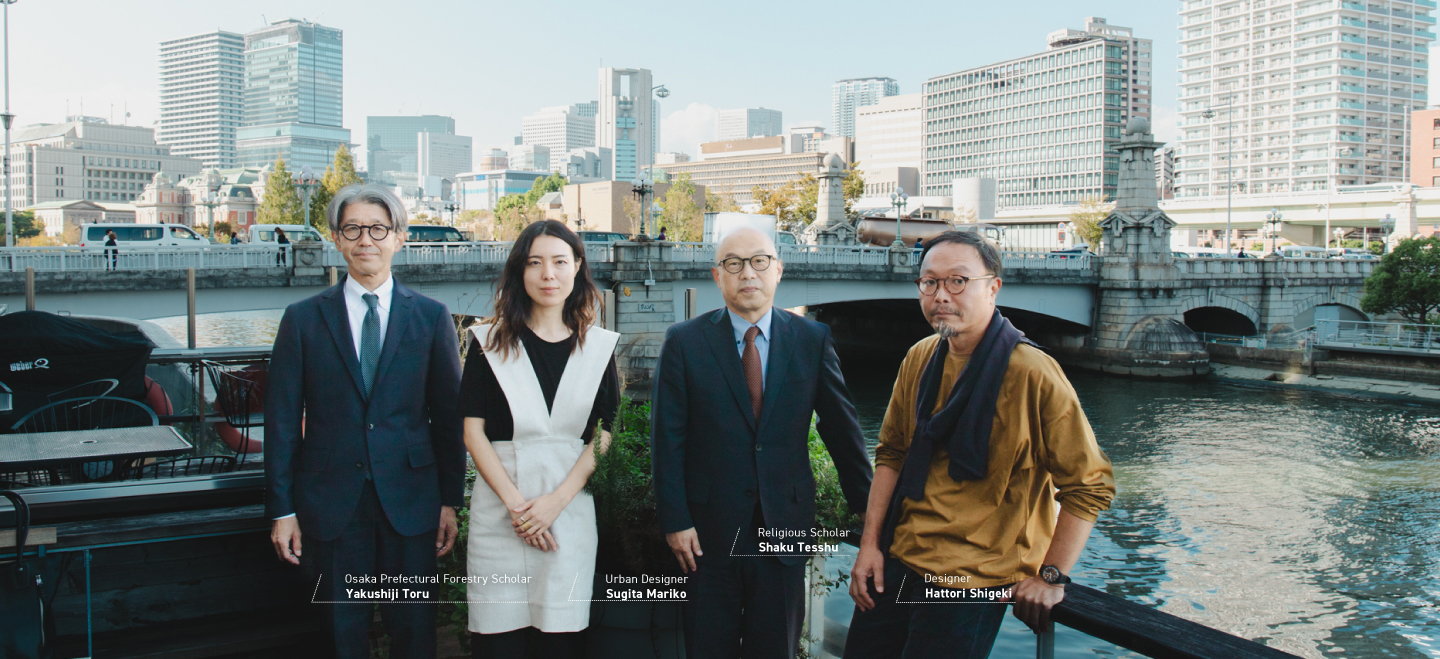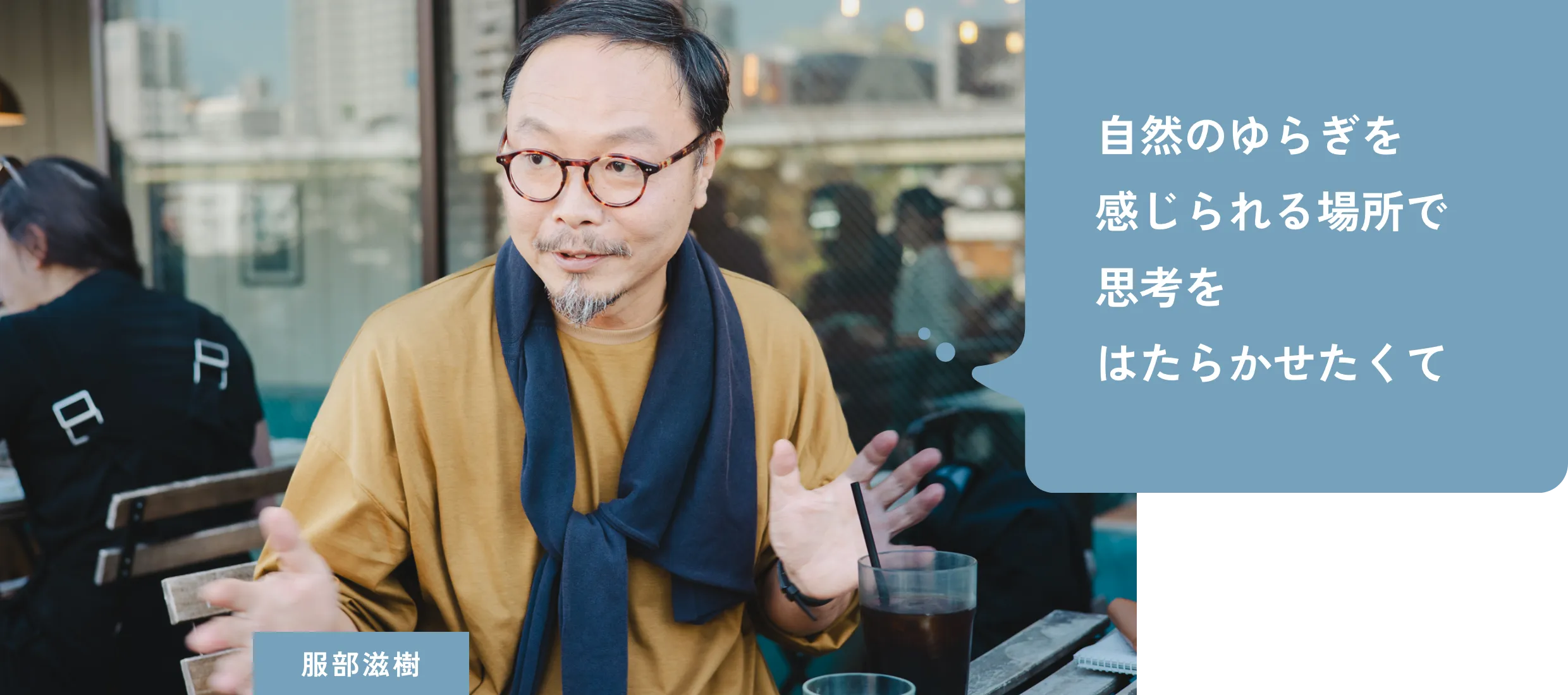
I wanted to engage
my thoughts in a place
where I could feel
the fluctuations of nature
– Shigeki Hattori
Profile: Shigeki Hattori
Graf Representative, Creative Director, Designer. We aim to create designs that nurture programs from projects and cultivate cultures from movements. In addition to representing graf, he works as a conceptual designer and director, producing outputs that translate society through the lens of various design fields.
- Hattori
- Osaka is known as the “city of water,” and my office is located along the Tosabori River, just like the venue for this roundtable discussion. I wanted to work in a place where I could see nature moving in motion, rather than cars speeding past, so I looked for a property along the river in Nakanoshima. I thought that time spent in nature greatly influences your environment and thinking.
- Sugita
- Tokyo was originally a city of water as well, wasn’t it? Nowadays, the whole town is a space where you don’t sense much water. Still, when I talk to people on the east side of Tokyo and even now, I can smell the water. A city with flowing water feels alive, as if energy is circulating through it and it’s refreshing. Rivers also sustain various life forms, making them an essential part of the cityscape.
- Yakushiji
- Enclosing rivers is one of the forms of wisdom that humans have developed over time. However, natural processes, such as floods, create new environments where organisms can adapt and thrive. Rivers are also a means of transportation for living organisms. Mountains, rivers, and oceans are interconnected, each playing a vital role in shaping the ecosystem.

- Shaku
- Come to think of it, despite being called the “city of water,” people in Osaka don’t seem to think much about the sea. It is difficult to have a sense that the sea plays a part in our lives. Maybe it’s because Osaka Bay is basically a quay instead of a sandy beach.
- Yakushiji
- Osaka Bay is actually a rich marine environment, home to finless porpoises, dolphins, and small whales. However, most of the coast is an off-limits industrial area, so it is difficult to take an interest in the sea day to day. There is a sandy beach from Kuwana in Mie Prefecture to Ise on the back side of the Kii Peninsula, and the sea is familiar to citizens. I think differences in the physical environment are significant. The same applies to ecosystems—when they are fragmented, interaction ceases. As diversity diminishes, ecosystems gradually weaken. It is their interconnectedness that sustains a thriving ecosystem.
- Shaku
- When it comes to life, people tend to think in a self-centered way about their own existence in the present moment. But humans, too, are part of the ecosystem.
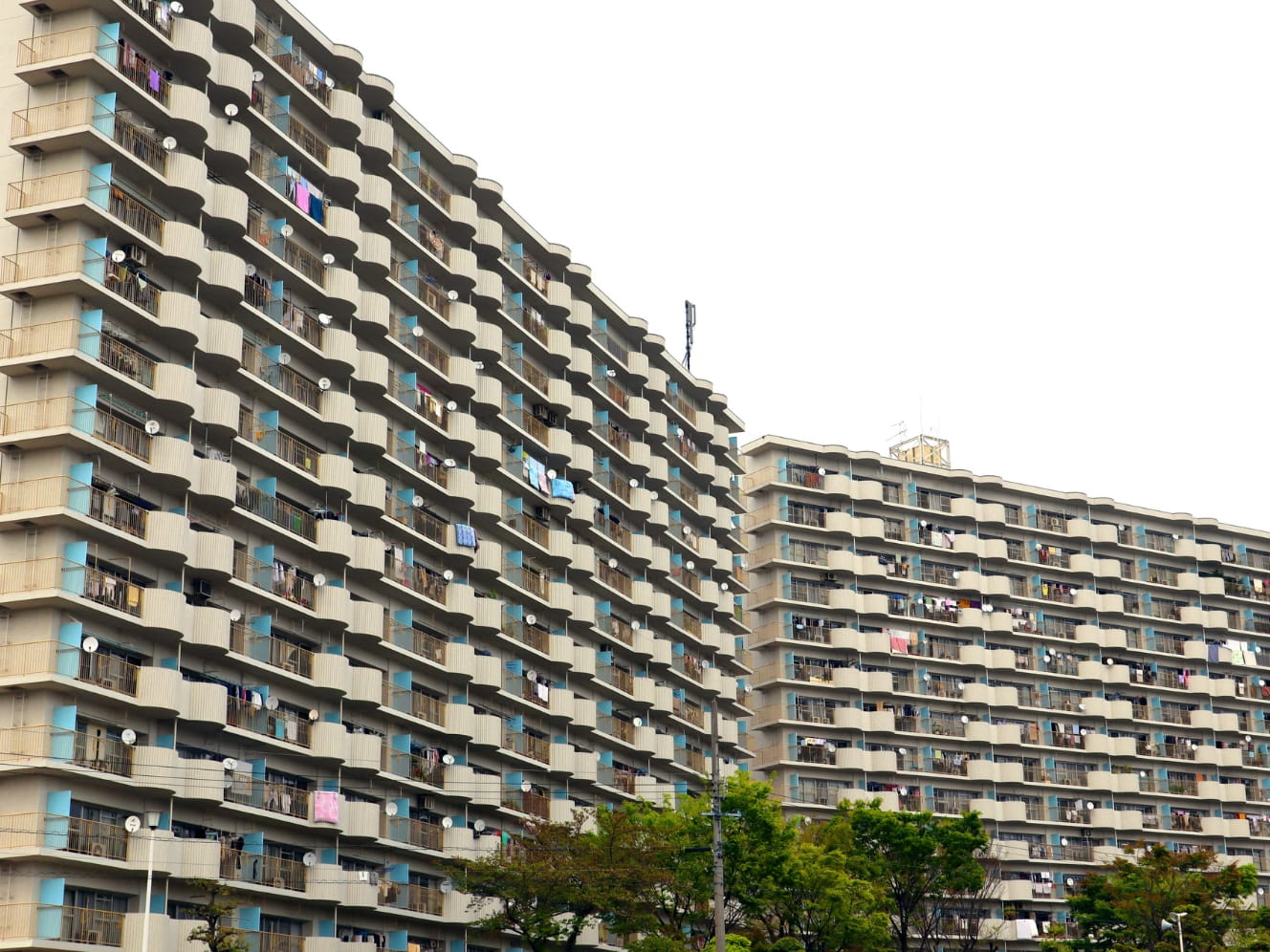
- Sugita
- This sense of division may also apply to the concept of time. When we talk about life, our focus is almost entirely on the present, making death feel very distant. In urban areas, buildings have been constructed on former burial grounds, leaving people with very few opportunities to encounter death in everyday life.
- Shaku
- During Japan’s period of rapid economic growth, many housing complexes were built in new towns. However, the apartments constructed at that time had narrow elevators, requiring coffins to be placed vertically in order to fit inside.
- Hattori
- When Japan’s population was around 60 million, most people could still live in single-story houses. However, as the population rapidly grew to 80 or 90 million, the concept of LDK-style floor plans became more common. As a result, building upwards became a necessity.
- Sugita
- In that sense, I think these new towns are a legacy of their time, having been created for the “here and now.” It was not designed to accommodate multiple generations, nor to account for “death.
Everyone thinks about
“For the next generation,”
yet they remain uncertain
about how to navigate the future.
– Toru Yakushiji
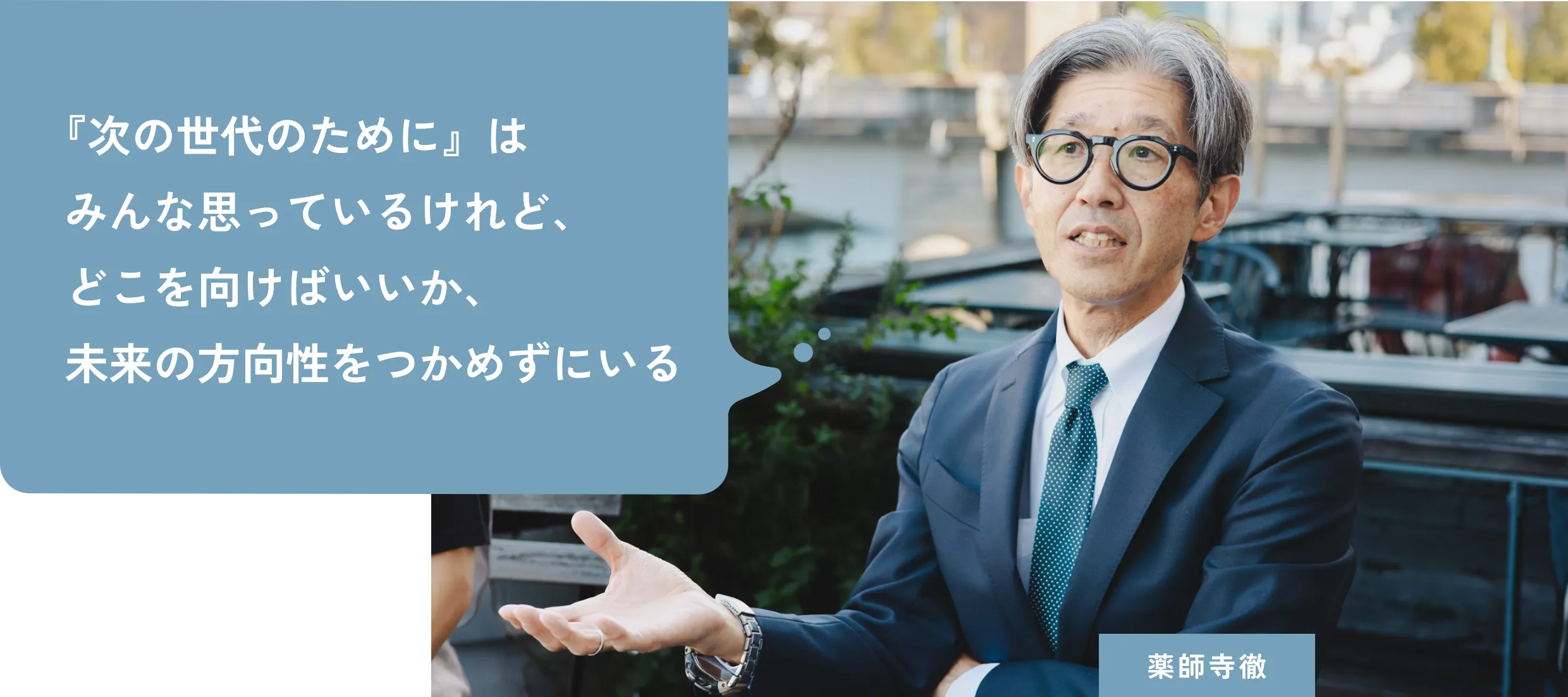
Profile: Toru Yakushiji
Employee of Osaka Prefectual Corporation for Agricultual Land Development and Greenery-Environment Promotion. A forestry scientist in Osaka Prefecture who works on “promoting the creation of disaster-resilient forests, the creation of greenery in cities and conserving biodiversity”.
- Yakushiji
-
In the pre-urban farming era, the top priority was to cultivate rice fields. Areas unsuitable for rice farming were used for other crops, sloping land was turned into orchards, and even low-productivity land was settled for housing. This way of life shaped many villages.
Agriculture and forestry can only continue if they are passed down through generations. Inevitably, they weaved their lives on what they inherited from their ancestors. In urban life, what your neighbor does for a living has little impact on your own life. Rather, in business, the focus is often on differentiation—how to stand out from others.
Therefore, different people have different ideas about what to do with the area. Even if one builds a house, the reality is that it is unlikely their children will inherit it, and the necessity of building in the area feels unclear. We may feel that we are doing this for the sake of our children and the next generation, but in reality, we remain unsure of what actions to take next.
- Shaku
- “Urbanisation of the mind” comes before “urbanisation of life,” yet now it feels as though the urbanisation of the mind is progressing even in rural areas. In the “city,” where one does not intrude on the values of others, individual freedom is maximised as long as it does not cause trouble. However, when nuisances arise, people are quick to attack the culprit. As I mentioned earlier, if such divisions persist for a long time, life will become increasingly difficult. Those who are isolated will struggle to live a fulfilling life and to connect with others and nature.
- Sugita
- Urbanisation of the mind, I see! In the world of urban design, it is said that we are now in the era of planetary urbanisation. In this age of global urbanisation, where cities are spreading across the entire planet, farming areas, rural areas, and urban areas are becoming increasingly integrated. In the past, cities were positioned as a necessary evil to confront nature, but now there is a movement to consider the city itself as a “forest” and explore whether it can have a positive impact on nature.
- Hattori
- “Forests” truly encompass a wide variety of things. I sometimes hear people lament that no one today can depict a vision of the near future that everyone can agree on, as Osamu Tezuka once did. But that can’t be helped. This is because our trajectory for the future is no longer unidirectional, as each of us has a different vision. I feel that in the coming era, it will be crucial to harness the uncertainty of “I don’t know” as energy—to think, “This future seems promising,” or “I’m going to pursue this future”—while engaging with diverse perspectives and possibilities.

The comfort of all living beings influencing one another
– Mariko Sugita
Profile: Mariko Sugita
Co-representative of the Urban Experience Design Studio and General Incorporated Association “for Cities”. In addition to writing, editing, and conducting research in the fields of urban, architectural, and community development, she is engaged in a wide range of creative activities, including curation (in the field of culture and the arts), as well as the production, direction, and facilitation of new programmes.
- Sugita
- I also think about how humans engage with a wide variety of non-human beings (multispecies) and how they behave as a species of animal… In this context, I am exploring urban experiences and the design of public spaces.
- Hattori
- There are many cases where the mountains that appear lush today were once “Satoyama” (so-called bald mountains). In fact, it was these bald mountains that represented a state where humans and forests were intertwined and coexisted. The planting of trees by housebuilders is one of the reasons these bald mountains were transformed into lush green forests. The trees were planted for constructing houses in the city, rather than as fuel for daily life in rural times. As a result of a declining population and high costs, it was fortunate that the trees were left as they were, without being cut down. This happened to align with CO2 reduction efforts, but I believe this is equivalent to consuming materials for design. Instead, I think we need to design with materials from the forest in mind.
- Yakushiji
- During the rural era, what was produced and how it was produced to sustain livelihoods was a key aspect of village life. As urbanisation progressed, raw materials were brought in from elsewhere, labour was relocated to urban areas, and productivity and efficiency took precedence over ease and comfort. If we place too much emphasis on productivity and efficiency, we will face difficulties, and I believe we are currently experiencing a reversal.
- Shaku
- Society was abruptly slowed down by Covid-19. By reflecting on how the world had been running at breakneck speed until then, I have realised the scale of what had been overlooked. In addition, intermediate communities—once abandoned due to the aversion to inconvenience and exclusivity—are now being recognised as essential for overcoming division and isolation. As a result, movements to revive them are emerging in various places.
- Sugita
- The community in the area where I live is both urban and rural. It is no exaggeration to say that I was so drawn to it that I chose to move there. It has allowed me to embrace a rural mindset and explore a new way of practising community living whilst still residing in a city. It’s incredibly comfortable! The other day, in a different area, I visited a friend who lived in a townhouse, and I was struck by the sight of a young boy in the neighbourhood reading a book like a “Zashiki” child (a type of local fairy). When he heard his parents’ footsteps a few hours later, he swiftly left. This kind of old-fashioned, tightly-knit neighbourhood and close community still exists, even in large cities.
- Shaku
- Amidst the growing momentum to devise and create intermediate communities and common land, some people are building platforms and engawa (verandas), much like how this bench becomes a shared space. Establishing places in society where everyone can sit and exchange something fosters “connections”. I’m sure many people feel that these “connections” enrich their lives.
- Hattori
- Speaking of which, I really like the sight of a bus stop without benches, where neighbours place chairs for others, where a variety of mismatched chairs stand together, or where grandmothers add cushions to them without asking. Perfectly designed objects are untouchable and will eventually be discarded due to wear and tear over time. But if there is room for adaptation, people will naturally want to modify them, allowing them to grow into something organic.
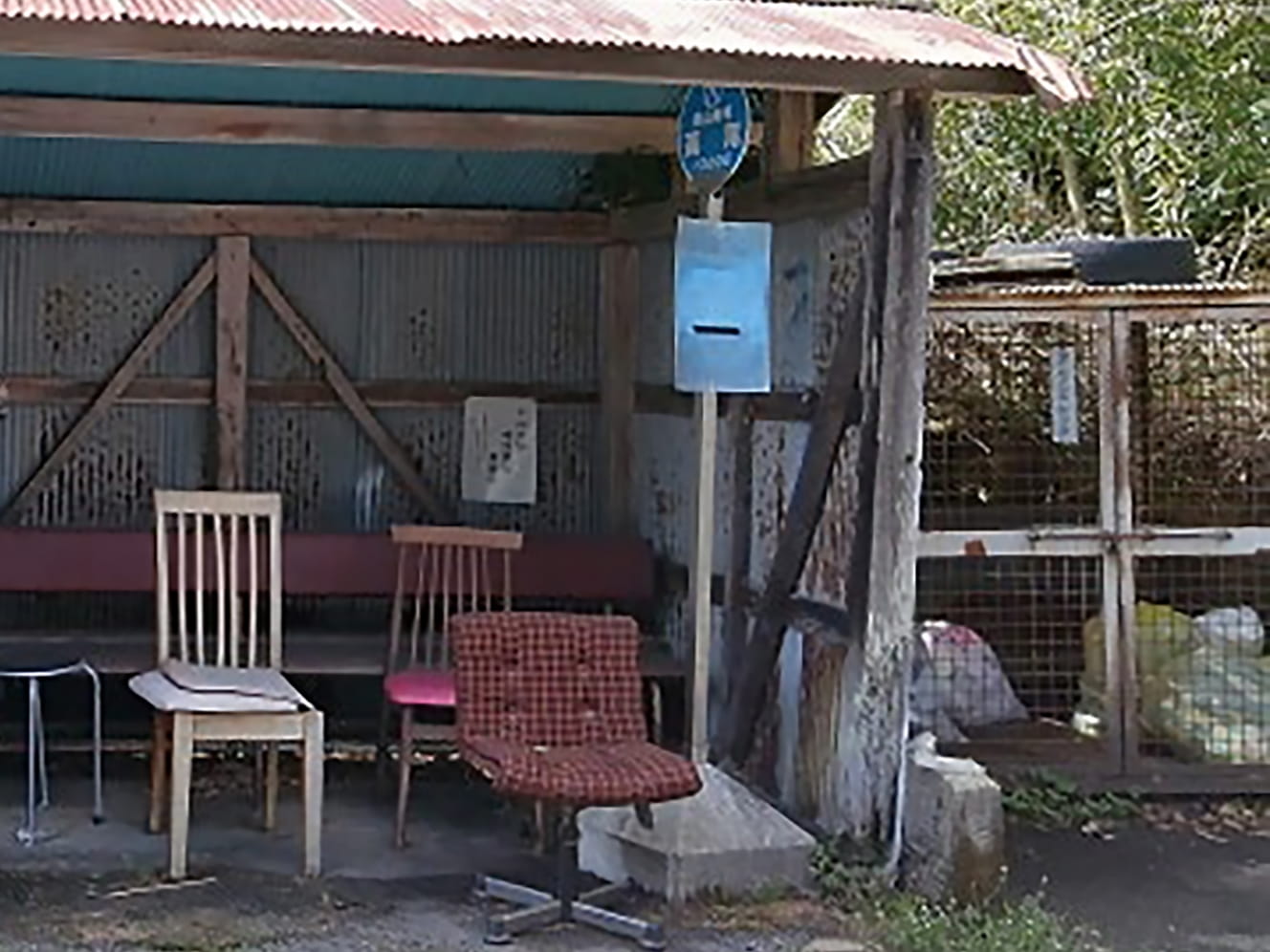
- Sugita
- When I lived in Canada, I saw plaques engraved with the names of the deceased attached to public benches. I believe the bereaved families donated part of their inheritance to the town, which is a wonderful system.
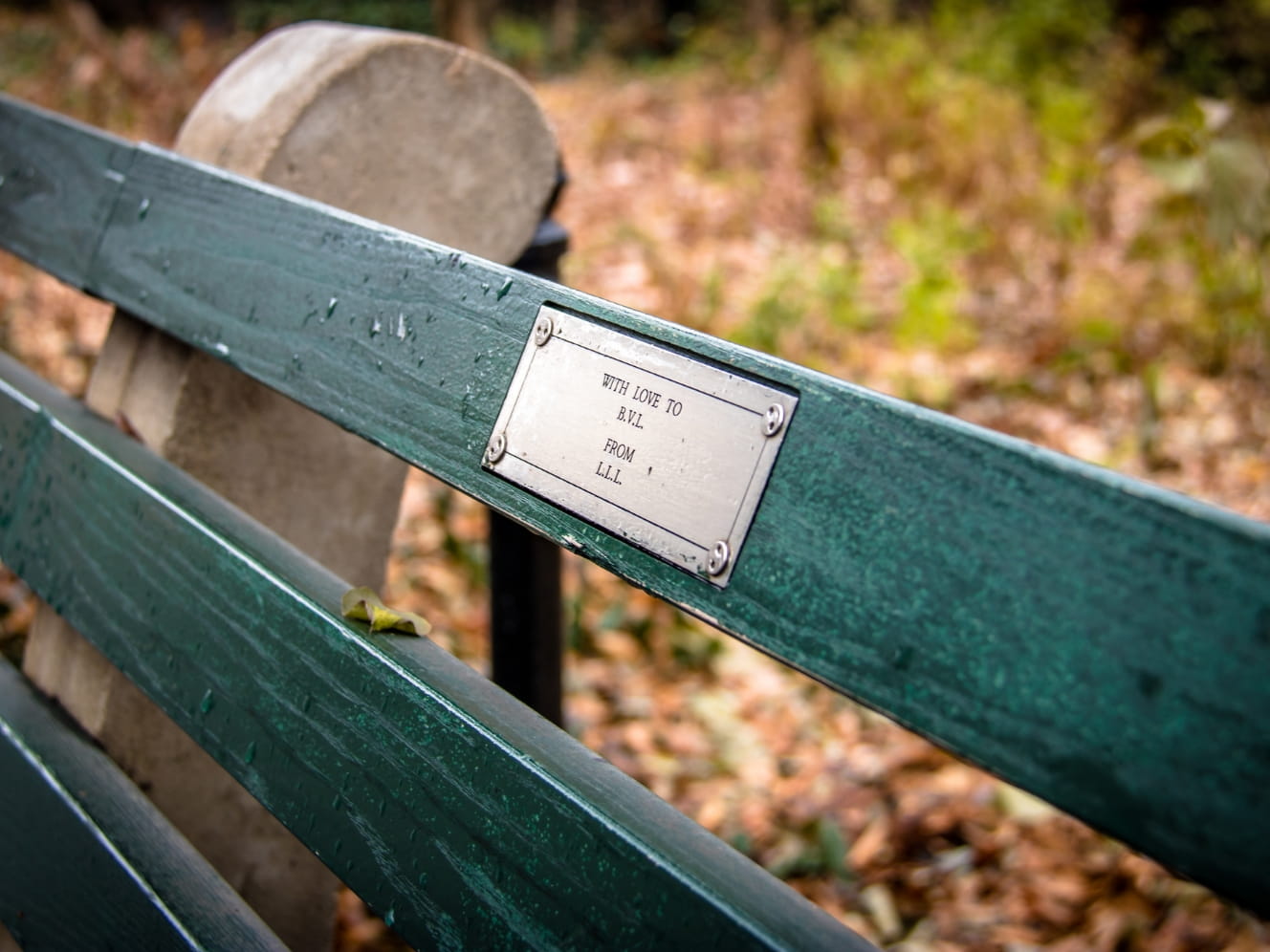
It would be wonderful if the bench could function as a “prolonging” device.
– Shaku Tesshu

Profile: Shaku Tesshu
Abbot of the Jodo Shinshu Honganji sect at Nyoraiji Temple, President of Soai University, and Professor at the Faculty of Humanities. He has served as a temple priest and university president, and has also undertaken a variety of activities, such as running a group home for elderly people with dementia in the community, in a house behind the temple.
- Yakushiji
- Speaking of “connections” , it is said that the forestry industry can only be sustained over at least three generations. The first generation plants it, the second and third work hard to nurture it, and after 50 to 70 years, the third generation finally harvests (cuts it down). Those who plant do not do so for their own benefit, but rather for the benefit of future generations. I have heard that in the past, it was common to plant Paulownia and Cedar trees when a girl was born, and when the time came for her to marry, they would be cut down and exchanged for money or crafted into a chest of drawers. I think the culture of forestry was never about oneself, but about the next generation.
- Hattori
- What caused people to lose awareness of “for the next generation”? It doesn’t seem to be limited to the forestry industry.
- Shaku
- Perhaps it’s because we have our hands full with what is right in front of us. Now that we have been abruptly forced to stop moving through life at breakneck speed, I would like to focus a little more on “prolonging” the time I have, rather than living in “shortened time”. I believe that “prolonging” time will contribute to the maturation of society. I’m not talking about time flowing externally, but rather time flowing through our minds and bodies. When you live with a long-term perspective, you don’t mind a few bumps along the way. On the other hand, if you live immersed in “shortened time”, even a small pimple will irritate you, and you will struggle to endure it. So, how do we “prolong” it? There are more and more systems that “shrink” the time flowing through our minds and bodies. If you have to wait for a while at a convenience store, you will feel irritated. Convenience stores have developed a system designed to eliminate waiting, so it feels even more frustrating when you actually have to wait. If the person in front of you is slow at the ticket vending machine at the station, you will feel annoyed because you expect the process to be smooth. There are many such “shrinking” devices, and if you are not careful, you will quickly be consumed by them. “Prolonging” is the theme of modern life.
- Sugita
- Maybe…… Isn’t this where the bench comes in?
- Shaku
- I think it would be wonderful if the bench could function as a “prolonging” device. One of the things that “prolongs” is, of course, culture. Isn’t culture irrational? Rational things “shorten” time, while irrational things “prolong” it. Also, remembering a father or grandfather who planted a tree for a child yet to be born is an act of “prolonging”. I believe that imagining a world that has yet to exist is also an act of “prolonging”.

